Case 1
Navigation
- Introduction
- Causes of Defects
- Good Practices
- Standards
- Maintenance and Diagnostics
- Remedial
- Similar Cases
- References
Cause of Defects
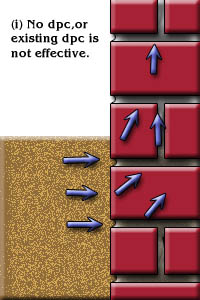
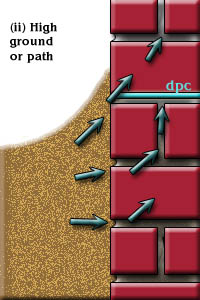

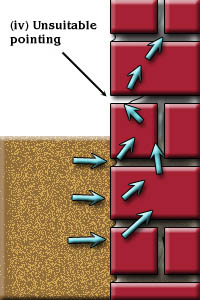
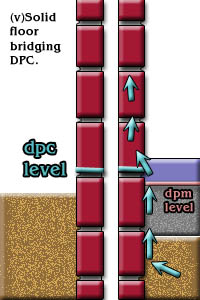
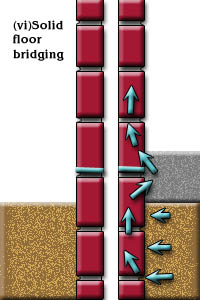
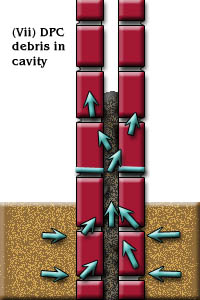
Possible causes include (Figure 1):
- Formation of crack at at the junction between the external wall and ground floor allowing water to rise
- Absence of DPC in the wall
- Bridging through inadequate perforated DPC
- Bridging by earth
- Bridging by rendering
- Bridging by mortar pointing
- Bridging by floor screed
- Bridging by mortar dropping in cavity
- Obstruction to evaporation from the wall surface
Some causes of rising dampness in walls.
Water may also enter into the building if:
- there is a gap around window and door components
- there is a crack or gap at the interface of brick walls and structural components
- there is a through crack or a plaster crack coupled with highly porous improperly filled mortar joint
- there is a crack in the masonry unit or masonry unit itself is highly porous.
Consequences
Salt particles are brought along which may block the pores and capillaries through which the water is evaporating, causing the dampness to rise further.